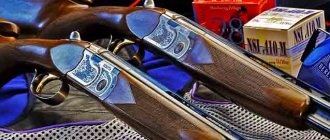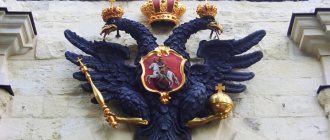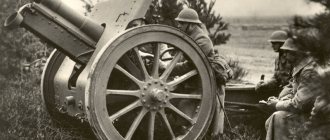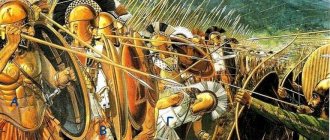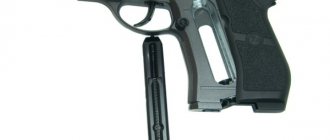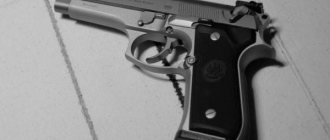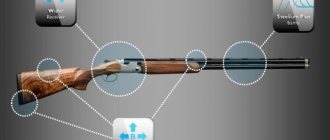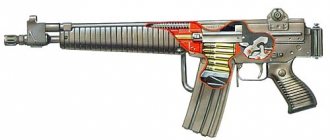| This article in based largely or entirely on a single source . |
Type of semi-automatic pistol
| Beretta 418 | |
| Beretta 418 with alloy frame | |
| Type | Semi-automatic pistol |
| Place of origin | Kingdom of Italy |
| Production history | |
| Designer | Beretta |
| Designed by | sometime between 1919 and 1922 |
| Manufacturer | Beretta |
| Produced | from early 1920s to mid 1950s |
| Characteristics | |
| Cartridge | 6.35×15mmSR (.25 ACP) |
| Action | Direct return |
| Feeding system | Magazine Capacity: early models 7, later models 8 |
| Attractions | Fixed sights, rear notch and front blade |
Beretta M418
is an easily concealable Italian 6.35 mm (.25 ACP) pocket pistol. The earliest examples were made between 1919 and 1922. There are several versions including the 1920 (V1 and V2), 1926, 1926 - 31 (V1 and V2), 1934, 318 and 418 models.
Early models[edit]
It is unknown in what year Beretta began producing its first 25 caliber pocket pistols. Dates suggested by various sources range between 1919 and 1922. Design work may have begun before the First World War, but the company gave preference to military requirements, so work on the compact 6.35 mm only resumed at the end of the conflict. The first version of the pistol was very similar to the 1922 model; In fact, it is almost a scale model with the only major difference being a spring loaded firing pin rather than an internal hammer. Mechanically, this change was detrimental; this was probably done for size reasons. In all other respects, both pistols are identical. They share a common trigger mechanism with an emergency release, as is typical of all Beretta pistols of the period. Shortly thereafter, a second version (Model 19) appeared with an automatic locking guard mounted on the back of the frame. Presumably the safety was added to compensate for the reduced level of safety inherent in striker-fired guns.
In 1926, a third version (sometimes known as the Model 1926) was introduced, in which the striker mechanism was completely redesigned to include a disconnector similar to that used in the Beretta M1923. This simple and economical modification contributed to the fame and commercial success of the 418. It featured a slight change in the position of the left grip and is easy to see without disassembling the gun.
Apart from the 1926 changes, production continued steadily from the early 1920s until the mid-1930s, when Beretta made further changes. By 1935, the pistol's appearance was considered obsolete and the grip was changed to be similar to the Beretta Model 1934. Later, a cocking indicator was also introduced: an extension of the firing pin protruding from the rear of the bolt. Otherwise so-called small Berettas
remained more or less unchanged since most of the major parts (barrel, magazine, etc.) were interchangeable.
Although changes to the weapon were minimal during this time, the name changed frequently. These different model numbers can only be found in Beretta catalogs. All pistols produced before the mid-1930s are simply marked: IBREV.
1919 .
Subsequent models until the end of the war were marked Brevettata
.
They included the date of manufacture in both the Julian calendar and Roman numerals from the Fascist era. Similar pistols produced immediately after the war may be marked Brevettata
, but more often -
Brevet
.
Five centuries BERETTA
Thanks to Pietro Beretta, the company acquired the status of the world's leading arms manufacturer.
Fabbrica d'Armi P. Beretta is located in the small town of Gardone Val Trompia in the province of Brescia. Nowadays, factories and workshops of almost all Italian arms companies are located in this province. This concentration of competing companies in one region can be explained very simply: once upon a time, iron ore was mined in these places and immediately processed. Today, several centuries later, no one mines iron ore here; on the contrary, raw materials for the production of weapons are brought from various countries of the world, so that the hands of Italian gunsmiths turn them into both genuine examples of weapons art and ordinary serial guns intended for mass buyer.
Let's take our minds back to Gardone Val Trompia five centuries ago. In 1485, the Tudor dynasty began to rule in England, in 1492, caravels led by Christopher Columbus reached the shores of the New World, in 1494, a war began between the royal houses of Europe for the possession of Italy, and in 1498, a sea route from Europe to India was opened. In Russia, at this time Tver was annexed to Moscow (1485), Ivan III accepted the title of Sovereign of All Rus' (1493) and the following year expelled the merchants of 49 Hanseatic cities from Novgorod.
It was here, in Gardone Val Trompia, in 1498 that a craftsman named Beretta (alas, history has not preserved his name) decided to start his own business. One can only assume that he, like his descendants later, was a gunner. But the name of the successor of his work is well known. Documents of the guild of gunners of the city of Gardone from that time have been preserved. They mention Pushkar master Bartolomeo Beretta. He was born in 1498 and died in 1565 (both dates are approximate). It is Bartolomeo Beretta who is recognized by official historiography as the founder of the Beretta company, and the date of creation of the company is considered to be 1526. A document survives, dated October 3, 1526, which refers to an order received by Bartolomeo Beretta from the Venetian Republic (Brescia was occupied by the Venetian Republic in 1428) for the manufacture of 185 arquebus barrels, for which he received 296 ducats. (Probably, a little explanation is required why we are always talking only about barrels. Already in those years, a division of labor, albeit forced, was introduced. The production of firearms was a highly specialized business: some craftsmen made barrels, others made locks, others made stocks etc. This system turned out to be extremely effective: in 1526, the daily production of weapons in Gardone ranged from 80 to 300 weapons.)
Bartolomeo had a son, Jacopo, and two grandsons, Lodovico and Giovanino. Lodovico left his father's house and went to the city of Brescia, where he began producing gun locks, and Giovanino, like his father and grandfather, became a master of gunsmithing. This marked the beginning of the creation of a dynasty of Beretta gunsmiths, and to this day remains faithful to the choice made 15 generations ago.
| Order received by Bartolomeo Beretta from the Venetian Republic (October 3, 1526) |
History does not know the subjunctive mood. No one can now say how the event influenced the course of history, which should definitely be mentioned when talking about the Beretta family. Around 1570, Giovanino Beretta married the daughter of a representative of the powerful Franzini family, the largest manufacturer of gun barrels in those years. His son Giovanni Antonio (1577–1649) continued the family business. Giovanni Antonio was, in addition to everything, also an outstanding weapons designer of his time. A document from the Republic of Venice that has come down to us refers to an order carried out by Giovanni Antonio Beretta. In 1641, he armed the ships of the Venetian Republic with six-pound cannons of his own design.
The rapid development of technology in the 17th century led to the rearmament of the army. Arquebuses gave way to muskets, locks were improved, so the matchlock and wheel locks gave way to the flintlock, which lasted for almost two centuries. By the end of the 17th century, the Beretta family was already one of the leading manufacturers of firearms. At the beginning of the 18th century, when Giuseppe Beretta (1680–1729) was at the head of the family business, the company first began producing barrels for hunting weapons. In documents dating back to 1698, the Beretta family ranks second on the list of the thirty-three largest arms companies, and in 1719 the Beretta company topped the list of exporters of gun barrels. The company owned a forge, a smelting furnace and three forging machines.
The development of social relations could not but affect the system of guilds, which once served the development of production and technical progress, and now stood in their way. Commercial capital increasingly invaded all spheres of social life. Thus, in 1784, the trading company Becalossi, Franzini & Febbrari made an offer to independent Italian gunsmiths that could not be refused: they were offered a one-year contract to manufacture ten thousand barrels for hunting weapons. The sales of finished products and all possible costs were borne by the merchants. Of course, the gunsmiths took the bait without thinking that they were losing their former independence.
In 1796, Napoleon's troops invaded northern Italy. Venice was unable to offer any significant resistance, and in May 1797 it was completely occupied and lost its independence. In October 1797, the Venetian Republic ceased to exist under the Treaty of Campo-Formia and was transferred to Austria. However, the region of Lombardy and the province of Brescia included in it remained with France.
One of the first orders of the French authorities was the complete liquidation of the gunsmiths' guild. This could not but cause joy among representatives of trading capital, but their hopes of making profits from the arms trade very quickly came into conflict with reality. The winners needed weapons solely to meet the needs of the army. A large arms factory was built in Brescia, which produced 40 thousand rifles annually until 1815, when Napoleon was overthrown.
At the beginning of the 19th century, it became obvious that the market for hunting weapons had the greatest prospects. That is why Pietro Antonio Beretta (the company bears his name today - Fabbrica d'Armi Pietro Beretta) began a thorough study of the market, began to select partners among the owners of gun stores, acquired a circle of regular customers and began to increase the production potential of the company. Already under Pietro Beretta, the company began to eliminate its dependence on component suppliers and began to turn into a full-cycle enterprise.
| Pietro Beretta led the company continuously from 1903 to 1957 |
The company's owners closely followed the development of technical thought and actively introduced new products into production. When percussion locks were introduced and it became clear that the days of the flintlock were numbered in both combat and hunting weapons, Beretta began producing shotguns with percussion locks. Looking ahead, I will say that, despite the readiness to accept new ideas and technical solutions, Beretta’s policy at that time as a whole would still be more accurately characterized as strict conservatism: for example, the production of ramrod guns continued until 1923, pin guns were produced until 1930s, and the first model of a shotgun with a vertical barrel arrangement (read – our answer to Browning!) appeared only in 1932. This model was designated SO. By the way, at present this abbreviation is used only in the names of high-end models.
By the beginning of the third quarter of the 19th century, more than 200 people worked at the Beretta plant, the production volume was about seven thousand weapons per year. It is interesting to note that during these years Beretta also imported and sold weapons manufactured by other companies, in particular Remington. (By the way, at that time other arms companies did not shy away from selling weapons from third-party manufacturers.) No less significant is that Beretta, the first of the world's arms manufacturers, established a warranty period of one year, and the guarantee extended not only to weapons with Beretta brand, but also on third-party firearms sold by the company or its representatives. Already at that time, Beretta dominated the markets in Europe, the Middle East and Africa. For the convenience of the company's partners who came from other cities and countries to the plant in Gardone, a hotel was built at the expense of Giuseppe Beretta.
At the turn of the century, the company was headed by Pietro Beretta. From 1903 to 1957 he led it continuously. He is credited with determining the development paths and strategies. Under his leadership, the production process was significantly modernized, and the design of weapons began to be developed taking into account the requirements of technologists. It was thanks to him that the Beretta company acquired the status in the world that rightfully belongs to it today - the world's leading manufacturer of weapons. Pietro Beretta also used his influence to open a state testing station at the plant, following the example of England and Belgium. His sons Giuseppe and Carlo completed what they started, turning Beretta into a diversified enterprise and the world's leading manufacturer of hunting and military weapons, as well as a huge range of goods for hunting and sports. The company owns several of the world's most famous arms brands - Benelli, Stoeger, Franchi, Sako, Tikka, Uberti, Burris.
At any enterprise, in any company, traditions inevitably arise. Perhaps one of Beretta's strongest and most time-tested traditions is the continuous improvement of existing designs. Unlike other companies that annually release new, sometimes not even fully developed, or even frankly “raw” weapon models onto the market, Beretta adheres to a different tactics and strategy, the essence of which is to constantly improve existing samples, models and designs. If Beretta enters the market with a new model, this means that the model is completely “brought to mind”, which, however, does not exclude the possibility of its subsequent development to absolute perfection. Thus, the models that have appeared recently are, according to company representatives, basic platforms for creating new models based on them in the future.
Today's range of hunting weapons is so wide that just listing the models and their options can take up several pages of a magazine. The company produces both smooth-bore double-barreled and semi-automatic shotguns, as well as double-barreled shotguns for popular calibers, including those for hunting large and dangerous animals.
If in the 1930s the policy of the Beretta company could be characterized as strict conservatism, then in the era of the beginning of the scientific and technological revolution the most accurate definition of the company's policy would be innovative conservatism. On the one hand, Beretta is rightfully considered a world leader in the production of gas-operated semi-automatic machines.
Work on their creation began in the late 1950s, and in 1960 a semi-automatic model with the factory designation “model 60” already appeared. (It is noteworthy that around the same time, in the early 1960s, the Izhevsk Mechanical Plant began developing a model of a domestic gas-operated semi-automatic machine by designer N. Galunov. The sample received the index IZH-21. Unfortunately, for reasons beyond the plant’s control, the introduction of the model into production was stopped.) On the other hand, in the 1960s, Bruno Civolani developed a design for a self-loading shotgun with an inertial reloading mechanism that harnessed the recoil energy of the entire shotgun. Now we can only guess why the leading arms manufacturers, among them, by the way, was Beretta, rejected Civolani’s proposal. It can be assumed that Civolani's design was not adopted by the major gun manufacturers because they did not trust the self-taught designer, and perhaps they had no desire to make a weapon that would be superior to their long-stroke or retractable self-loading shotgun models. powder gases. Or maybe the matter is completely different: it is likely that the technical equipment of arms factories at that time simply did not allow them to produce weapons that required minimal tolerances during processing, and there was no confidence that investments in the acquisition of new equipment would be justified. However, in 1983, everything returned to normal: the Benelli Armi company, which produced and continues to produce self-loading hunting weapons with an inertial reloading mechanism, was sold to the Beretta holding.
In 1961, the range of semi-automatic machines produced by the company was supplemented with a model with the factory designation “model 61”. It should be noted that the factory nomenclature did not necessarily coincide with the designation of the same models in the countries to which they were exported. For export, mainly to the USA, this semi-automatic machine was supplied under the Lark brand. Depending on the version (type of walnut, presence or absence of a ventilated rib, etc.), this model was called Silver, Gold or Ruby Lark. For example, the 1961 Gun Digest contains no references to models 60 or 61, but does mention various versions of the Lark model.
In 1965, Beretta began producing the A-300 model (this semi-automatic model was discontinued in 1979). However, such an authoritative reference book as Shooter's Bible states that Garcia, which imported Beretta weapons to the United States, imported AL-1 semi-automatics during these years. And the Blue Book says that the AL-1 semi-automatic model was imported to the USA in 1971-1973, AL-2 - in 1973 -1975, AL-3 - in 1975-1976, and the A-300 and A-301 are the result of further modernization of previously produced models. Their production dates back to 1977 – 1982. In general, as many people as there are, so many opinions.
Perhaps part of the reason for the disagreement lies in the fact that some models were included in catalogs before the company began producing them, while other models were first put into production and only then included in catalogs. An additional contribution to the discord and confusion was made by the lack of a unified system for designating products supplied to the domestic market and exported.
In 1977, production of semi-automatic models A-300 began. It was soon followed by the 301st, 302nd and 303rd models. The A-303 model had a 76 mm chamber, which made it possible to use magnum cartridges for hunting; accordingly, the receiver cover window was enlarged. (When the need arose for a semi-automatic that could handle supermagnums, Beretta introduced the Xtrema 3.5.) This truly versatile and extremely reliable shotgun was a huge success on both sides of the Atlantic. In our mortal world, nothing is eternal, and in 1996 this model was discontinued and was replaced by the semi-automatic A-390, which embodied all the best features and characteristics of the previous model.
It is interesting to note that at first the A-390 semi-automatic was equipped with an angular receiver cover, strikingly reminiscent of the Browning-2000 receiver. Some even allowed themselves to sneer sarcastically about copying competitors’ guns. However, very soon designers intervened in the matter, and the gun acquired the elegant look that it currently has.
True, the A-390 had a huge advantage over the B-2000, and it was that the 390th model was “omnivorous” thanks to a compensation valve that regulates the pressure of powder gases, installed on a gun for the first time in the history of semi-automatic production, and on “ Browning" to fire "magnums" it was necessary to install a special "magnum" barrel. The “Magnum” barrel had a fixed choke, the barrel with a 70 mm chamber had a fixed choke. The Browning also had problems with the automatic operation when firing magnums, problems arose with replaceable chokes, or rather, with threads, and other problems arose. And the 390th was greeted with a bang not only by hunters, but also by stand-runners. We successfully shot with this gun both on a trench stand and on a round stand.
The Beretta company, true to its philosophy of bringing its guns to absolute perfection, launched the A-391 Urika and A-391 Urika 2 models on the market. The famous design studio Guigiaro worked on their appearance. I don’t know the reason, but for some reason many Russian hunters are firmly convinced that the previous model was better.
| This pair of guns was made to commemorate the 70th anniversary of the company's president, Hugo Gusalli Beretta. |
If in any revolution the most important question is about power, then when we talk about a new model of weapon, the question inevitably arises about its price. In recent years, it has clearly pursued a policy of gradually ousting “budget” semi-automatic devices from the range of products. Semi-automatics are approaching the price of Beretta 686E class over/under shotguns.
2004 was the year of the appearance of an unprecedented number of new models of weapons from the world's leading manufacturers. And only from the headquarters of the Beretta company in Gardone there was almost no news. Almost - because the appearance of the SO10 model, which in itself is an event, was passed over in silence by Russian weapons magazines. What's the point of talking about a gun that, even though there is every reason to call it “perfection itself,” is absolutely inaccessible to 99.99% of the readership? In January 2010, the SO10 shotgun was presented to former US President George W. Bush. There are guns of this model in the collections of leading Russian politicians.
Knowing full well about the highest creative and technical potential, it could be said with a high degree of certainty that this is the calm before the storm. Back in 2003, as they say, from “unreliable sources” it became known about the launch of a new semi-automatic model into production. Rumors about the new model, called UGB25 Xcel (don’t worry, the abbreviation in the model’s name coincides with the initials of the company’s president, Hugo Gusalli Beretta, the number 25 in the name denotes the years during which he runs the company), excited everyone and everything. In the “spy” photographs taken with mobile phones, one could see a semi-automatic machine of an unusual design for Beretta, which had nothing in common with the traditional appearance of the semi-automatic machine of this company.
Adherents of the classical canons in hunting weapons immediately declared their rejection of the new model. And really, what is it? A single-barreled shotgun, automatic reloading and ejection of the spent cartridge case means it is a semi-automatic device, while at the same time the barrels of the new model recline, like a classic “breaker”. But the fact of the matter is that this is not a hunting rifle, but a sporting rifle. The UGB25 model marks a departure from technological developments towards other design solutions.
I am sure that many have never encountered such a symbiosis, but it is impossible to say that this is a conceptually new development. Since 1925, Cosmi semi-automatic machines with hinged barrels have been on sale. However, if the Cosmi semi-automatic machines served as prototypes for the creation of a new model from Beretta, the similarity turned out to be purely external, because as soon as you begin to understand the principle of operation of the automatic, the differences immediately become apparent.
The future will tell to what extent the market is ready to accept a new model of semi-automatic shotgun with a price approaching $5,000. True, the gun is worth it. Unusual design, highest quality and technical characteristics speak for themselves. Bold and innovative design became a distinctive feature of the new model, but in this case, innovation was not an end in itself, but was a functionally justified means of self-expression and the implementation of design ideas. Tradition, style, innovation - three components combined together allowed Beretta designers to create a true masterpiece of gunsmithing art.
And finally, the newest model of the semi-automatic Beretta A400 Xplor Unico, the world presentation of which took place on October 8 last year. The presentation of the new model was shrouded in secrecy. The invitation stated that a new model of hunting weapon would be presented to the attention of journalists, with which you can even go hunting for a dinosaur. The world premiere, to which the elite of hunting journalism was invited, took place on October 8 this year. and crowned three years of hard work by the company's designers and engineers. It took eight thousand hours to create a new model, two thousand hours of testing, one hundred thousand shots - and hunters all over the world received a gun with unique characteristics. However, judge for yourself: a unique recoil reduction system (the force acting on the shooter’s shoulder is reduced by an incredible amount - up to 70%!), a reduction in reload time by 36% compared to similar models and “omnivorous”, i.e. the ability to shoot any cartridges with a shot weight from 24 to 64 g. The A400 Xplor is not just a new semi-automatic model in the Beretta line of shotguns, but a platform for creating a new generation of semi-automatic shotguns. (Read the article about the new Beretta model in the upcoming issues of our magazine).
Beretta double-barreled shotguns are no less popular than semi-automatics, both among hunters and athletes. Hunters who choose the Beretta 686 or 687 are confident that they have made the right choice. The time-tested trigger for these guns, designed in the late 1980s, has proven itself to be excellent. The USM turned out to be so perfect that after more than 20 years, no significant changes were made to its design. The barrels in the low-profile block occupy an optimal position in the direction of the recoil vector, which contributes to less tossing of the barrels during the first shot and a faster and more accurate second shot.
One of the favorite guns of gundog hunters all over the world is the Ultralight model, created on the basis of the USM 686 model. The weight of a 12-gauge shotgun does not exceed 2.7 kg. The weight reduction was achieved by using a light alloy used in the aircraft industry. A block made from this alloy weighs 65% less than a steel block. However, the use of a light alloy did not in any way affect the strength characteristics of the block and the gun as a whole. By the way, to increase the survivability of the gun, the forehead of the block is made of a titanium plate.
For those who value not only functionality in a gun, but also the aesthetic side, the S687 EL Golden Pigeon and S687 EELL Diamond Pigeon guns are ideal. They are also created on the basis of the time-tested USM 686 model. True, unlike guns of lower versions, these models have false boards decorated with exclusive engraving in the classic Italian style and very often using gold inlays. These models are not only used by hunters. Very often, sport shooting athletes choose them. The Silver Pigeon shotgun is available for shooting on the round and trench stands, there is also a “sporting” version, but the Golden Pigeon model, which is distinguished by a more refined finish, is available in a sports version only in the “sporting” version. But this does not mean that this gun cannot be used successfully on a skeet. And even moreover, if necessary, this model can show everything it is capable of on a trench stand.
In the 20th century, the premium side-lock SO5 model crowned Beretta's line of sporting shotguns. Their barrels are made by cold forging from Boehler Antinit corrosion-resistant steel, which has high mechanical characteristics. The length of the SO5 shotgun barrels for a round stand is, at the customer’s choice, 66 or 71 cm, for the “sporting” version – 71 or 76 cm, for the “trap” version – 76 or 81 cm.
In the 21st century, the flagship of Beretta's line of sports models was the DT10 Trident. The model name is easy to decipher. Trident is the company's symbol, and the abbreviation DT stands for detachable trigger. What prompted the company's management to decide to launch a new model of top-class sporting shotgun? The answer lies on the surface: the company's management was confident that the designers were capable of creating a sports gun that was not only not inferior to the world's best models, but also surpassed them. The choice of the world's leading shooters in favor of this gun, and the results they show, serve as convincing evidence that the company's designers coped with the assigned task “excellently”, but at the same time they are not going to rest on their laurels.
In 2008, at the IWA exhibition, among other developments from Beretta, the newest model of a hunting rifle with a vertical barrel arrangement, the SV10 Perennia, was presented. This model harmoniously combines the traditions of hunting weapons production, modern design, functionality and style. The development of any new model is always associated with many restrictions that the designer faces a priori. These are dimensions, the interaction of parts and mechanisms, weight, balance, elegance of appearance, compliance with classical requirements and at the same time taking into account modern aesthetics, not to mention reliability and the need to achieve the required characteristics of shot scree.
The SV10 Perennia not only meets all of the above requirements, but even exceeds them. This is, indeed, a classic double-barreled shotgun, unlike the UGB 25 Xcel model. But this is where the most important thing begins. The design of this gun model is protected by five patents! But the innovations implemented in the shotgun model are important not even in themselves, but because the SV10 Perennia will become the starting point for the design of new models of this line of shotguns.
Attaching the stock to the block overturns the classic idea of needing a pinch screw through the stock. The stock is attached and removed using a special key included in the delivery set. At the same time, to remove the butt you no longer need to remove the butt plate; the hole into which the key is inserted is located at the end of the handle. Using the same key, you can also remove the trigger.
The new barrel profile emphasizes the inextricable connection between form and function. The barrels are made by cold forging. Changes have also been made to the bore drilling. For this model, the Optima-Bore HP (High Performance) drill was chosen, which is distinguished by an elongated projectile entry. This improves scree performance and reduces the impact of recoil on the shooter's shoulder. (The built-in Kick-Off shock absorber is also designed to combat the negative effects of recoil. Two oil-filled shock absorbers not only effectively dampen recoil, but also reduce vibration and barrel bounce, which increases shooting comfort.) The barrel bore and chamber are completely chrome-plated, which, according to company experts , should help increase resistance to corrosion and wear, and also help increase shot velocity. Long Optimachoke HP chokes provide excellent shot characteristics such as uniformity and accuracy. Representatives of Beretta specifically noted that the SV10 Perennia shotgun is suitable for shooting steel shot. Considering the intensity of passions in the controversy surrounding steel shot, which is being waged on the pages of hunting periodicals, I want to ask whether this is the answer to the question that worries everyone, whether it is possible to shoot steel shot from domestic guns. It turns out that everything is very simple: if the gun was originally designed to fire steel shot, shoot to your heart’s content; if it is not designed, it is better not to experiment.
Just as you cannot stop the process of cognition, you cannot stop the process of creating new models. Beretta's statement that the SV10 would be the starting point for the design of new models in this line of shotguns was confirmed the following year, when the SV10 Prevail sporting shotgun model was demonstrated to journalists and shooters.
A representative of the English company, traditionally classified as one of those producing high-quality shotguns, or, as the British themselves call them briefly and succinctly, “best,” said that thanks to attention to the smallest details, the strictest quality control and the use of the latest technologies and the most modern machine park, the products Beretta is fully capable of competing with the weapons of the best European gunsmiths. I wonder what Bartolomeo Beretta, who was at the forefront of creating the family business almost 500 years ago, would say about today's company?
The author expresses deep gratitude to Chiara Pivato and Jarno Antonelli for their assistance in preparing the article.
Andrey Ugarov
Beretta Model 418[edit]
The 418 was the last model released and was very successful. Although considered by some to be insufficiently powerful for combat, it found favor with high-ranking Italian officers during World War II. The German command in Rome provided samples; they can be distinguished by the "4UT" stamp. The M418 remained in production until the mid-1950s, paralleling the production of more advanced guns developed by Beretta. By the end of the 1940s, a light alloy frame was developed. Minor aesthetic changes were also made soon after. [1]
The 418 was sold in the United States as the "Bantam" starting around 1952. From about 1958 it was sold as the Panther. The Panther has been improved upon from the Bantam, but parts are interchangeable. [2]
On the American front
At the end of the 1970s, NATO made a decision to standardize the block of pistols in service with the armies under a single 9-mm cartridge. First of all, this applied to the American armed forces, equipped with the famous 45-caliber Colt revolver, widely known from gangster and cowboy action films. At stake was not only almost $70 million, quite significant at that time, but also the possibility of penetrating the promising overseas arms market, access to which until then had been denied to Europeans. Beretta could not resist such a temptation. And why?
In 1978, practical tests of twenty-five models of pistols of various brands and systems, as well as one hundred samples of cartridges for them, began at the US Air Force base. The customers put forward very strict requirements: the weapon must be capable of firing 40,000 shots and 800 shots in continuous fire mode after an hour in dirty water.
In February 1982, the testing program was abruptly curtailed because none of the pistols met all the requirements. But in November 1983, the tender organizers still had to lower the requirements and ask pistol manufacturers to again provide samples for study. After new tests, the verdict was finally delivered: the Italian Beretta 92F won as the standard model of personal weapons for all branches of the US armed forces. In the USA it received the indexation M9 Pistol, 9 mm. Beretta has the opportunity to manufacture and supply 377,965 pistols in the United States over a five-year period for a total cost of $67.7 million.
The decision to win the tender for Beretta was made in mid-1984, and the official announcement of this followed only six months later. And all this time, the Italians steadfastly repelled the attacks of American business competitors. The initiator of the American-Italian “pistol” conflict was Smith & Wesson, which, due to the passive participation in the competition of Colt, the main manufacturer of short-barreled pistols on the US market, for some reason decided that it would easily win on its site. After it became clear that Italian gunsmiths, unknown in the United States, would win, Smith & Wesson, instead of developing a competitive pistol for participation in the tender, began a black PR campaign using administrative resources. It was alleged, for example, that the mud used during the contamination test was of the wrong consistency, that is, it did not meet certain standards. But this did not help, nor did numerous appeals to the courts.
M418 in fiction[edit]
| In this section do not cite any sources . |
The Beretta 418 is also a contender for James Bond's pistol of choice in the first five novels of the series by Ian Fleming. Bond's pistol is described as a "very flat .25 Beretta (model number never specified by Fleming), frame grip automatic" (i.e., grip side panels removed - frame only) and a threaded barrel to support a suppressor. [3] At the end of the fifth novel, From Russia with Love
Bond fails to draw the Beretta at a critical moment when its silencer gets caught in the waistband of his trousers, nearly killing him.
This incident leads to his boss M ordering him to start carrying a new service weapon in the early chapters of the sixth novel. Doctor
No.
Major Boothroyd, MI6's armorer and "the greatest small arms expert in the world", according to M, insists that Bond trade it in for a weapon with greater stopping power. Bond is issued the 7.65 Walther PPK, [4] and Smith & Wesson Centennial Airweight revolvers in situations where he needs more power than the PPK can offer. He uses both guns during a mission in Jamaica for this novel, and then relies on the PPK in subsequent stories. In the film adaptation of Dr. No
, the first in the series, Boothroyd only offers PPK and Bond reluctantly turns in his Beretta (the larger M34 replacing the 418).[5]
In fact, Ian Fleming received a fan letter in 1957 from Geoffrey Boothroyd, a Bond enthusiast and weapons expert, criticizing Bond's choice of firearms. Boothroyd called the Beretta a "woman's gun" and suggested several alternatives, one of which was the Walther. Fleming thanked Boothroyd by naming MI6's gunsmith in Dr. No
. In the film, Boothroyd refers to this by describing the Beretta with the line "nice and light, for a lady's handbag...".
Design features of the Beretta 92
The safety lever is double-sided and is located on the bolt cover. Turned on with your thumbs by turning the flag down.
The included safety does not block the bolt, which allows you to safely reload the weapon. When the safety is turned on, the trigger is disconnected from the trigger rod - that is, it becomes uncocked.
You don't have to cock the hammer before firing, but you will need to put more force on the trigger than when it was cocked. This is called self-cocking.
There is a jumper between the cartridge primer and the firing pin, which prevents a shot until the last phase of the trigger movement. Immediately before the shot, this jumper rises.
After the clip is used up, the bolt casing is retracted and locked in this position. When a full magazine is loaded, the bolt automatically fires a cartridge into the chamber.
Serial numbers [edit]
| Model number | Serial number range |
| Maud. 1920 Version I | From 100000 to 106000 |
| Maud. 1920 Version II | From 106000 to 112000 |
| Maud. 1920 Version III | From 112000 to 155000 |
| Maud. 1926 | From 155,000 to 187,000 |
| Mod.1926-31 | From 187251 to 198000 |
| Maud. 1934 | From 603700 to 608300 |
| Maud. 318 | From 609000 to 610000 |
| Maud. 418 | 611000 to 658016, 10001A to 99999A, 00001C to 46410C |
